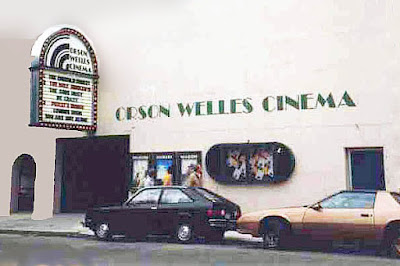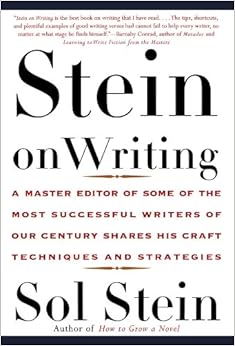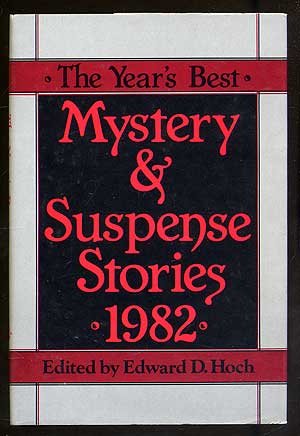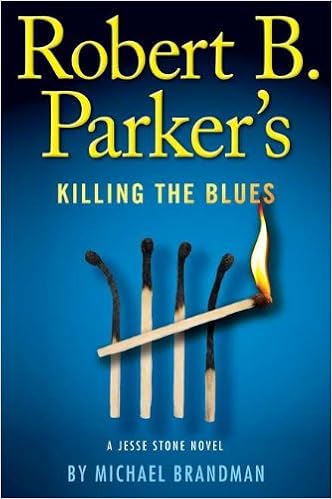When I read that Kenneth Branagh is directing and starring in a new movie version of Murder on the Orient Express, I had mixed feelings. I love just about everything Branagh has done--his Dead Again is probably my favorite mystery movie of all time--and seeing him play Poirot is bound to be fun. But the 1974 movie version of Murder on the Orient Express is so delightful that making another one seems unnecessary. It also seems dangerous: Any new version is sure to be compared to the 1974 one, almost sure to suffer by comparison.
That got me thinking about movie remakes, wondering if it's possible to draw any tentative generalizations about why some work and some don't. I'm no expert on movies, but it seems to me that some of the best movie remakes are more than remakes: They're independent movies in their own right, genuine reinterpretations of an original text, a character, or a central premise. Other movies (or, in at least one case, television series) aren't remakes but seem shaped by an earlier movie in a fundamental way. They may extend some element of the original movie, or they may challenge it. For lack of a better term, I'll call them replies.
And that's my ulterior motive for writing this post. For fear of burying my lede, I'll tell you right now: If you haven't seen a quiet 2012 movie called Liberal Arts, I think you should. Better yet, re-watch Woody Allen's Manhattan, and then watch Josh Radnor's Liberal Arts. I think Liberal Arts is wonderful, and I think it may represent a truly creative way of responding to a classic movie. More about that later.
For now, back to remakes. We often regard them skeptically, partly because there are so many of them: Apparently, 2017 will bring us remakes of everything from The Mummy to Disney's Beauty and the Beast (live action this time) to Death Wish. "Why," we ask, "can't Hollywood come up with something new, instead of recycling the same old plots?" Writers have special reasons for feeling that way. If Kenneth Branagh wants to make a mystery movie, why crank out yet another version of Murder on the Orient Express, when he's more than welcome to the screen rights for our stories and novels?
And we've all seen remakes that disappointed us, irritated us, perhaps left us sputtering with disbelief and indignation. (Obviously, the opinions I'm about to express are my own opinions and nothing more. I apologize if they disappoint you, irritate you, or leave you sputtering.) For example, I was looking forward to the 2016 remake of The Magnificent Seven. I enjoyed the 1960 movie and didn't see any reason not to remake it--after all, it's a remake itself, of 1954's Seven Samurai. Plus, like just about everyone else, I love Denzel Washington. But the remake left me cold. The cast is more diverse than the 1960 one, the acting is fine, the action scenes are well choreographed (and very long), and some details are educational--who knew pioneer women showed so much decolletage? Aside from that, though, not much about the 2016 version is new. And, at least to me, characterization seems weak. In the 1960 movie, each of the seven becomes a distinct, memorable character, often after only a few minutes of screen time. In the remake, as one after another of the seven fell during the final shootout, I had to keep asking my husband, "Which one was that?" And I found myself wondering why the director decided to remake the movie in the first place, since he didn't seem to have anything new to say.
I wondered the same thing when I saw the 2010 remake of 1984's The Karate Kid. (My husband is a fifth-degree black belt, so I have seen every martial arts movie ever made.) The remake takes place in Beijing rather than Los Angeles, and the protagonist is five or six years younger. Other than that, it's almost the same movie. (The director even kept the romantic subplot, so we're treated to the slightly creepy experience of watching two twelve-year-olds kiss. Some additional tweaking of the old script might have been nice.) I'll admit I skipped the remakes of Arthur and The Pink Panther. In each case, I think, the original movie's appeal rests primarily on one actor's remarkable performance, and I doubted the replacement actor could equal it; reviews I've read and comments I've heard confirmed my doubts. I did see the remakes of The Wicker Man and The Haunting, and I wish I hadn't. Remakes that awful feel like insults to the original movies. In general, I think remakes are unlikely to succeed if they feel like no more than attempts to reach a younger audience, promote a promising actor, amp up the special effects, or cash in on a popular movie's name.
But we've probably all seen remakes we enjoyed, too. I liked the 1995 remake of Sabrina and the 1978 Heaven Can Wait (a remake of 1941's Here Comes Mr. Jordan). With both, it may have helped that I hadn't seen the original movies first and wasn't tempted to make comparisons--I could simply enjoy the new versions as clever, well-acted movies. After watching the remakes, I made a point of watching the original movies and enjoyed those, too. So maybe that's one thing to be said for remakes: The good ones may attract some new viewers for classic movies.
And a pretty good remake my help us more fully appreciate the qualities that make the original movie excellent. For example, I think 1998's A Perfect Murder is a respectable remake of 1954's Dial M for Murder. It borrows key elements (yes, that's a pun) from the original movie but doesn't follow it slavishly. For one thing, the newer movie tries to make the wife a stronger, more independent character--she's highly educated, she has an important job, and she investigates the murder on her own and figures out part of the mystery for herself. She can also be unbelievably gullible, though, and she takes foolish risks that seem inconsistent with her character. And when we compare A Perfect Murder with Dial M for Murder, we see how much has been lost. The humor and the irony are gone. The relationships are less complex, and the characters aren't as subtle and fascinating. (A special note to writers: While preparing to write this post, I re-watched both movies, and it struck me that the characters and relationships in Dial M for Murder are more complex, subtle, and fascinating partly because Hitchcock allows himself two long stretches of dialogue we would today disdain as "info dumps." Yes, it's back story. Yes, the characters are telling and not showing. But it's done well, the back story is engrossing, and telling is probably the only concise way of giving the action a depth it would otherwise lack. Maybe we should reconsider some of the current truisms we all repeat with such confidence.) My guess is that fifty years from now--a safe prediction, since I won't be around to have to admit it if I'm wrong--people will still be watching and enjoying Dial M for Murder, and A Perfect Murder will be, at most, a footnote in books on screen history. It's not a bad movie, though, and if you've got a couple of hours to spare, you might give it a try.
Once in a while, a remake may be even better than the original, or at least so good that it's debatable. I'd put the 2004 remake of The Manchurian Candidate in that category. It follows the general outline of the 1962 movie but makes fundamental changes in plot, characters, and theme. It's an interesting movie in its own right, we can see a legitimate reason for returning to the story and reworking it to comment on contemporary situations, and some viewers (including me) think the overall production rises above the impressive original. This time, Denzel Washington found a remake worthy of his talents.
People can also debate the relative merits of the 1956 and 1978 versions of Invasion of the Body Snatchers, and some will stick up for a 2007 remake called The Invasion. The two remakes aren't simply glitzier versions of the original: Each makes major changes in plot and characters, and each develops its own themes. People can debate about the themes, too. Does the 1956 original comment on Cold War tensions, with the pod people representing either soulless Communist infiltrators or followers of Joseph McCarthy bent on suppressing nonconformity? (Each theory has its advocates.) Does the 1978 remake reflect a post-Watergate view of government as riddled with conspiracies? What do we make of all the references to the Iraq war in the 2007 version? The two remakes also offer different ways of resolving a logistical problem the original movie ignores: Once a pod person takes over a human's mind, what happens to the human's body?
All three of these movies, as you may know, are adaptations of Jack Finney's 1954 science fiction novel, The Body Snatchers. So should the two later versions be seen as remakes of the original movie, or as reinterpretations of Finney's novel? I can't answer that question--I don't know if the people who made the later movies even read the novel--but I do think some movies often called remakes might more aptly be called reinterpretations. For example, there's the 2010 True Grit. Like its 1969 predecessor, the 2010 movie is based on a 1968 Charles Portis novel of the same name. I haven't read True Grit, but all the reviews and articles I've seen agree the second movie follows the novel more closely than the first one with regard to plot, characters, tone, and other elements. And Joel and Ethan Coen, who wrote, directed, and produced the 2010 movie, have said they decided to make it because they were intrigued by the book and particularly by the voice of its narrator, Mattie. In this case, then, "reinterpretation" may be more accurate than "remake."
That may also be the term to use when talking about the many movie versions of the Sherlock Holmes novels and stories, of other novels and stories, of plays by Shakespeare and others, of legends such as the story of Robin Hood, and so on. It's probably helpful to see most of these as reinterpretations of the original source, more than as remakes of earlier movies. That's what I hope Branagh's Murder on the Orient Express will be--a fresh interpretation of Agatha Christie's novel, not just an attempt to duplicate the success of the 1974 movie. After all, there have been several film versions of Ten Little Indians / And Then There Were None. When a story's so gripping, it's no wonder many moviemakers want to take a turn at telling it.
Branagh still faces a daunting challenge, since the 1974 movie was so good. It's almost like attempting another movie version of The Godfather or To Kill a Mockingbird--probably not a smart move. (People are welcome to keep making movie versions of Pride and Prejudice, though, until somebody finally gets it right. In my opinion--and again, it's merely an opinion--the only movie that does Jane Austen justice is Emma Thompson's Sense and Sensibility. It still breaks my heart that Thompson and Branagh got divorced.) Anyway, I wish Kenneth Branagh well with his reinterpretation. I can't think of anyone more likely to succeed at the task he's taken on.
And then there are some movies and television series that can't really be called either remakes or reinterpretations but still seem linked to earlier movies, either explicitly or implicitly. I don't know if there's an official term for them, so I'll just call them replies. For example, the television series Fargo isn't a remake, but the movie version clearly supplies its inspiration. The movie and the series share a Minnesota setting and similar characters and plots: People who don't think of themselves as criminals blunder into crime and end up destroying many lives, including their own; ruthless criminals help spread the misery; and ordinary, hard-working police officers restore order, both by bringing the guilty to justice and by providing a redemptive model of decency and simple family joys. The pattern is the same, but each season of the series has introduced new characters and stories. To me, the television series Fargo provides an interesting alternative to remakes and sequels. (It doesn't hurt, of course, that the writing and acting are so consistently excellent.)
Then there's Liberal Arts. I don't have proof--I've spent several hours looking around online but could never find confirmation--but I think Josh Radnor's 2012 Liberal Arts is a reply to Woody Allen's 1979 Manhattan. This has been a pet theory of mine for some time, and I'd love to know what you think. (I'd also love it if you'd give Liberal Arts a try--and I'm not saying that only because writer, director, and star Josh Radnor and I are both Kenyon College alumni, and most of the movie is filmed on Kenyon's exquisite campus. I've never met Mr. Radnor, and I don't own stock in the movie. Wish I did.)
Liberal Arts centers on the attraction between thirty-five-year-old Jesse and nineteen-year-old Zibby. (Sound familiar?) Jesse's a bookish, discontented admissions counselor at a New York City college. He goes back to Kenyon for a favorite professor's retirement dinner and meets Zibby, a sophomore. They strike up a friendship. The next day, they take a long walk around campus, talking about books, music, life. After he returns to New York, they write to each other, and the friendship deepens. She invites him to come back to campus to visit her. When he does, she says she wants to have a sexual relationship with him.
I'll stop the plot summary there, both for fear of spoiling the movie for you and in hopes of enticing you to see it. Instead, I'll mention a few similarities and differences between Liberal Arts and Manhattan--I assume you've all seen Manhattan, so I won't worry about spoiling that. Manhattan is set entirely in--well, Manhattan; Liberal Arts balances New York scenes against scenes set in the nearly pastoral village of Gambier, Ohio. In both movies, the age difference between the man and the woman is considerable, but Manhattan's Isaac is forty-two, and Tracy is seventeen--a significantly larger difference, especially since Tracy's still in high school and below the legal age of consent. Isaac's fiercely solipsistic, almost exclusively focused on his own problems and needs. He cites concern for Tracy's welfare as his reason for breaking up with her, but is his attraction to another woman his real motive? When his relationship with the other woman ends, and a depressed Isaac realizes "Tracy's face" is one of the things that makes his life worth living, he tries to persuade her to come back to him, even though she's about to embark on a journey that could enrich her life.
Jesse, like Isaac, spends time fretting about his needs and disappointments. But he clearly cares about other people, too, including Dean, a brilliant but troubled student Jesse meets during his first trip back to Kenyon. When Dean's life comes to a crisis, Jesse rushes to the college again to help him through. And when eminently desirable Zibby invites Jesse into her bed, he responds with sentiments seldom expressed in movies these days. "I believe in consequences," he says. "No, you believe in guilt," she counters. "Maybe," he admits. "But guilt before we act is called morality."
Well, that's probably a spoiler. But it's one of my primary reasons for thinking Liberal Arts is a reply to Manhattan. Both movies are well-written, well-acted, visually stunning, deliciously witty. Both center on similar situations. But the protagonist in Manhattan is ruled by his desires, and the protagonist in Liberal Arts can put his desires aside and make careful moral choices--again, something we seldom encounter in movies these days. Does Josh Radnor see Liberal Arts as a reply to Manhattan? Did he ever even see Woody Allen's movie? I don't know. If he didn't, it's a remarkable coincidence--the kind of coincidence any good mystery writer rejects as unbelievable.
When I was a freshman at Kenyon College, taking a year-long survey course in the history of British literature, I was often struck by the way the writers we studied seemed to be carrying on a dialogue with each other, a dialogue stretching across centuries. Writers alluded to their predecessors, imitated them, rebelled against them, borrowed from them, reshaped what they borrowed. It's natural for writers to influence each other and try to outdo each other. Moviemakers seem to be engaged in a dialogue with their predecessors, too. At this point, the dialogue often takes the form of remakes. As time goes on, the dialogue may become more varied, as writers and directors discover new ways to respond to movies that inspire or provoke them. In the meantime, we viewers wade through many remakes, avoiding or enduring the mediocre ones, surprised by joy when an old favorite gets transformed into a new delight.
Are
there movie remakes or reinterpretations you especially like or
dislike? Are there movies you see as replies to earlier ones? If I've
maligned a movie you love or praised one you despise, please don't
hesitate to say so. People get passionate about movies--that's one thing
that makes talking about them so much fun. And I'm sure we'll all be
nice to each other.
As
others have already noted, three SleuthSayers have been nominated for
the Best Short Story Agatha this year--Barb Goffman, Art Taylor, and me.
Gretchen Archer and Edith Maxwell have been nominated, too. I'm
thrilled and honored to be named along with these fine writers. You can
read all the nominated stories here.





























































